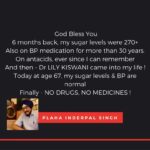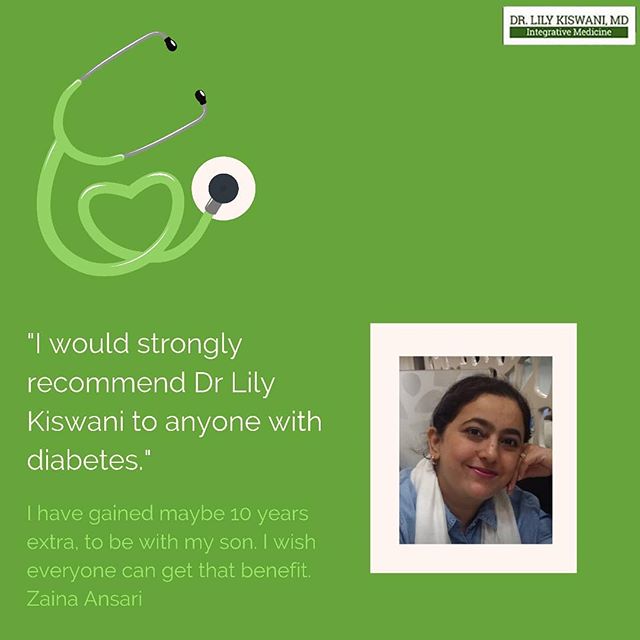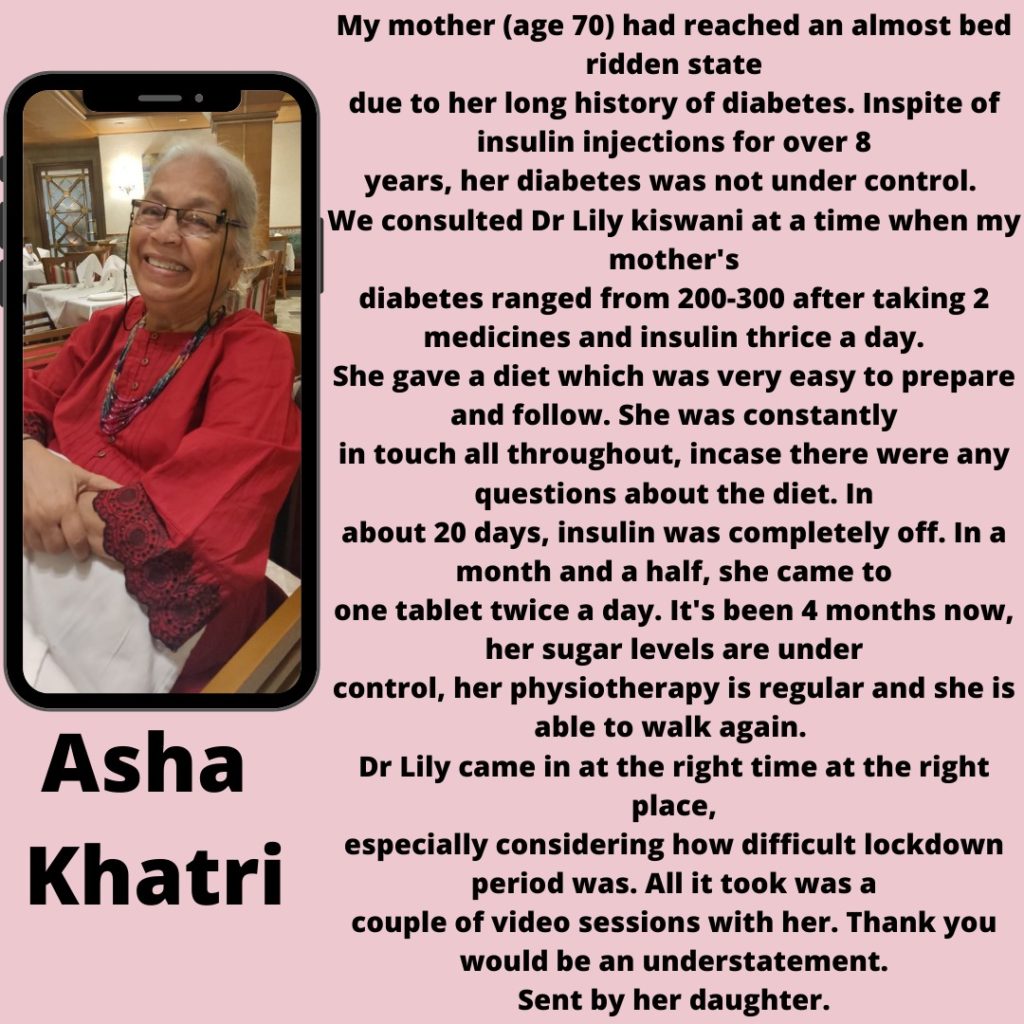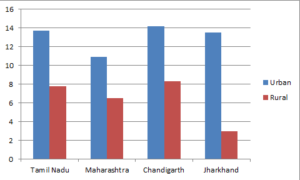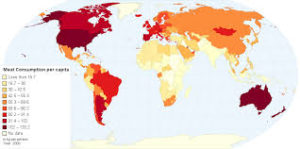DR RAVI VARMA, MD
I am a consultant radiologist and an Associate Professor at one of the medical colleges in Mumbai. My 67 year old mother had been on anti-diabetic medications for 15 years. Despite strict control of blood sugar she used to suffer from few unexplained issues. Most troublesome of all were recurrent skin infections in the form of furuncles appearing in clusters over the trunk and lower extremities which required antibiotic therapy or incision & drainage. This continued to occur despite proper skin care and measures to eradicate nasal Staphylococci. She also used to get frequent upper respiratory infections.
Another symptom was hunger pangs which would sometimes make her so restless that she would grab whatever was available at hand.
Over a period of years she started developing neuropathic symptoms like tingling, numbness and shooting pains in the extremities, which is known to occur with long standing diabetes. Sometimes there used to experience sudden calf muscle cramps at night so severe as to wake her up from sleep.
Sleep and bowel habits were irregular and overall despite optimal glycemic control and medications to address various symptoms, her quality of life was far from satisfactory.
When we read about Dr.Lily Kiswani’s new form of treatment and her credentials in a magazine, my mother was hopeful and eager. In our first consultation, Dr.Lily explained that the fundamental problem in diabetes is hyperinsulinemia which develops due to insulin resistance at the cellular level over a period of time. It is possible to reverse insulin resistance and cure Type 2 diabetes. After doing the prescribed tests, we had an exhaustive five hour session where she explained the measures to be taken to address the various health issues. She advised that my mother stop all her medications and monitor the blood sugars. Two days after stopping the medications blood sugar shot up, during the second week it started decreasing and after one month it had come back to normal levels. We have been checking the sugars and HbA1c levels every month and they have been normal consistently. Insulin levels which were 8 times high before treatment is normalizing. The painful skin infections have not occurred in the past one year, there has even been relief from some of the nerve related symptoms. I later discovered that the painful muscle cramps were a side effect of one of the drugs she was taking earlier.
I am amazed by the simplicity and holistic approach of integrative medicine. Integrative medicine is not the same as naturopathy. It is entirely based on modern medical principles and can successfully cure a variety of problems other than diabetes. I sincerely wish that many more people will benefit by this advance in modern medicine.
—————————————————————————————————————-
This is what Plaha Inderpal Singh had to say about his health:
God Bless You
6 months back, my sugar levels were 270+ Also on BP medication for more than 30 years. On antacids, ever since I can remember And then – Dr LILY KISWANI came into my life ! Today at age 67, my sugar levels & BP are normal Finally – NO DRUGS, NO MEDICINES !
————————————————————————————————————–
Here’s another happy patient:
I had a great experience with Dr Lily kiswani. I was very curious about how the integrated medicine would work. Had tried a lot of medication when my legs would constantly hurt after a particular viral fever. My treatment just went into spiral. Every medicine gave me some new complication. That’s when I decided to meet Dr Lily. Went in extremely skeptical. She is amazing. Not just a Dr, she is a great friend as well. After the first session itself I felt tons of baggage is off my shoulder. Progressively I forgot why did I go to her the first time. She has not only healed me, has taught me to listen to my body as well. So grateful. Hope she is able to help many more like me and bring their joy back.
Indu Ramani.
————————————————————————————————————–
And this:
Uttej Kalanadhabatta
June 28, 2018 at 10:40 AM
Lily madam is a superstar.
I have known Lily madam since couple of years. Have been following her advices and guidances on health and diet. With that relationship, I have approached her regarding my father’s health.
We consulted her in March and its been 3 months and my father lost almost 10 kgs (yes, 10 is a very good steady weight loss without hampering loss of muscle but only fat) and waist was reduced 6 inches.
Improved health markers:
1. Reduced blood sugar levels
2. Quality of sleep
3. No snoring
4. Healthy digestion
5. Improved taste buds
6. Balanced hormones regarding digestion
7. No gastrointestinal issue
8. No BP
9. Active entire day
He was a diabetic. He had blood sugar levels elevated (fasted and PP) and various other health complications. I was really worried about his health. So I reached her. She asked me to perform some blood tests to my father and we had done that and shared those results to her. She evaluated and called us over Skype and spoke to us for nearly 1 and half hour.
She is really good and friendly. She listens to everything in detail and provides information without any hesitation or irritation. This should be the first criteria in any profession.
After the entire conversation, she understood everything in detail of my father’s working conditions, family stress, history of family health and many other things. She then gave a diet which was easy to prepare in the home and obtain outside easily. She busted various myths which we hear outside from other medical professional, generally. She asked to stop some toxic medications and start believing in natural medicines (food). If she feels there is a need to continue medication, she asks us to provide the name and she will check it and understand whether we need it or not.
My father used to have insulin, BP tablets, gastrointestinal tablets. She asked us to stop using gas tablets and insulin as these weren’t good for health internally. Also, asked us to reduce the quantity of BP tablets to half.
Remember, insulin is catabolic and inflammatory(I learnt this from lily madam)
She finally gave few supplements personalised to our health reports. My father was deficient in few nutrients so suggested to take some natural vitamins from authentic sources for low cost.
Its been 3 months. We are happy seeing results.
Only reason why I’m publishing this here because I wanted to show gratitude to her.
She is a blessing to each and everyone who had known her. She likes to help and improve people and their lives.
I’m gonna recommend her to other friends and family also.
Thank you madam.
————————————————————————————————————-
Thank you Dr.
Glucose level of my husband has come drown fasting 185 to 113 within a year without any medicines. But just based on your constant guidance and suggestions on food and changing of life style.
Asha Tejaswi Hegde
——————————————————————————————————————–
An ex-diabetic talking about his ex-illness
Metmorphin and Insulins became my close friends in my last 10 years apart from other medicines of BP, Acidity and indigestion.
I thought that these things will remain attach to me throughout my life and my close with them will intensify with ever increasing dosage of it.
Though I got detected of diabetes a decade ago I am not sure when I actually became diabetes patient like millions of other patients across the world. We get to know that we are diabetic only after detection. I my case it was loss of weight for which approached doctor and got to know that I am diabetic. Body gave me signal few years before detection when I got fainted after blood donation and when I felt uneasy on my religious fasting days.
I was praying for medical science to advance further but I was worried that pharma companies dominance in research will not let any medicine which will have immediate cure. I was convinced that BP tablet once taken as to be continued for life to safeguard Kidney. I can’t skip Insulin and diabetic medicine even for a day and pharma company can continue to earn daily income from patients like me till we are alive.
I became the most favourite customer of my chemist and he started offering good discounts to me understand the importance of retaining me for life as customer.
More than money I was worried about impact these drugs on my other organs as I was aware of all side effects of these so called scientifically tested drugs.
I was also aware that drugs were not improving my sugar level over a period of time and my body is resisting drugs and insulin. I reached a stage where inspite of highest metmorphin and insulin my HbA1c reached 12.
I could not understand what is going wrong in my body. Of course my profession causes stress at work, however stress of health added salt to injury.
Inspite of best of the world medicine my health was not improving and I my health was detoriating very fast. I started consuming high quantity of karela, Jamun, Amla and what not but with no impact on my sugar level.
One fine morning my wife suggested of Dr. Lily Kiswani who can reverse diabetes. I took the suggestion casually as hundred of ads keep on floating in social media about such claims.
My wife convinced me that this doctor is a genuine one and showed me youtube video and webpage with news as diabetes killer.
I was also keen to change my diabetologist but wanted to avoid ayurvedic or any other medicine as I was sure that they have no proven remedy for it.
After getting to know that Dr.Kiswani’s medical qualification I agreed to visit her along with my wife.
Three hour long session with Dr. Kiswani opened new door to my life. I got fully convinced that diabetes is reversible only thing I need to do is to follow her advice on diet and her prescription.
I agreed with her view that insulin is also a harmone and I am pressuring my pancreas to produce more insulin by continuous consumption of starchy food like rice and wheat though I had discarded sugar and sweet a decade ago.
I understood that my body need protein but not the sugar and starch in wheat and rice in the quantity in which I get when I consume it.
It convincing for me that I need good fat, good protein which will revitalise the required right harmones organs of my body including pancreas.
I stopped consuming rice, wheat, sabudana and all such stuffs from first week of June, 2019 and started adhering to new therapy on food and lifestyle.
I took risk of discarding more than 8 tablets and insulin and in last months sugar level is normal range or rather better than what used to be when used to take tablet.
I think it’s nothing less than miracle that I am able to lead life without medicine (except harmone related safe food type medicine and food supplements prescribed by Dr. Kiswani).
I think Dr. Kiswani came as God’s angel in my life and I pray God that her remedy be accepted in the world so that entire humun generation is saved from killer diabetes.
Shankar Kotian
———————————————————————————————————
I am Zaina Ansari, a homemaker and a mom to an active 6 year old. I was diagnosed with diabetes 14 years ago. I was under a lot of stress and I noticed a lack of energy and also started putting on weight. As a result my confidence dropped. My husband told me Dr Lily Kiswani could help. I did not want to continue like this so I consulted her. I was afraid of what she was going to suggest; what if her advice was difficult to follow? But I found her very approachable and her advice was actually very simple. I followed it and I found my blood sugar levels return to normal, even after stopping medication. I lost weight, I gained energy, my self-confidence came back and I am very happy. I would strongly recommend Dr Lily Kiswani to anyone with diabetes. I have gained maybe 10 years extra, to be with my son. I wish everyone can get that benefit.
——————————————————————————————————————————-
Thank you Lily Aunty!

Couple of years back I was suffering from a bloated stomach 24*7 which I thought was due to me being lactose intolerant. I was also suffering from acne on my face which I thought was due to hormonal imbalance, eating all the junk food. Having something called a ‘gut issue’ was quite novel to me and when I understood it from lily Aunty, I was skeptical at first to have the checks in my diet or change it. Some months passed by and my acne wouldn’t come under control despite of taking strong medicines prescribed by the dermatologists and I was in constant pain due to my stomach issues.
Then thought to give Lily’s aunty’ s diagnosis a try. I took some tests. Curbed the carbs from my diet, took the necessary supplements and I started seeing the results very quickly. My skin started clearing up, I could have dairy products without my stomach hurting and there was no bloated stomach.
2 years of clear skin and then I went back to my old lifestyle where I ate junk food quite often had irregular sleep cycles etc. The deterioration started after 6-7 months of this lifestyle- I had the worst acne I could possibly imagine and I had extreme stomach issues. And then I resorted back to Lily aunty’ s consultation and I saw the results in just 2 months this time. Without any medication just looking after what I ate surely went a long way.
I can safely say my gut is in better condition than it ever was, my skin is glowing (no trips to the dermat) and I do seldom have my cheat days where I can have carb filled foods. The diet initially seems it’s too much to handle, but once I started having it, I explored a lot of options which are gut friendly and tasty and its hassle free. It is a small tweak which goes a long way.
PCOD
The first PCOD patient I treated using an Integrative Medicine approach was AK, who was then 25 years old. Her face was full of hair, a condition called hirsutism. She said she had had hirsutism ever since puberty, that there had never been a time when her face was clean of excessive hair. I recommended the treatment to her, and warned her to not expect early results, as the hair cycle is 6 months, so it would take 6 months for her hirsutism to clear up. And that was the reason I did not give her an early appointment.
However, she was relocating for work, so she came to see me in three weeks’ time. At that time, her face was completely clean. I assumed this was due to local treatment, and did not remark on it. But she said she hadn’t used any cream or other procedure!
In my 30+ years of gynecologic practice, I had never seen such results. To this day, I am shocked at the difference in results using a Modern Medicine approach and an Integrative Medicine approach. The body has infinite power of healing and that is what we harness.

